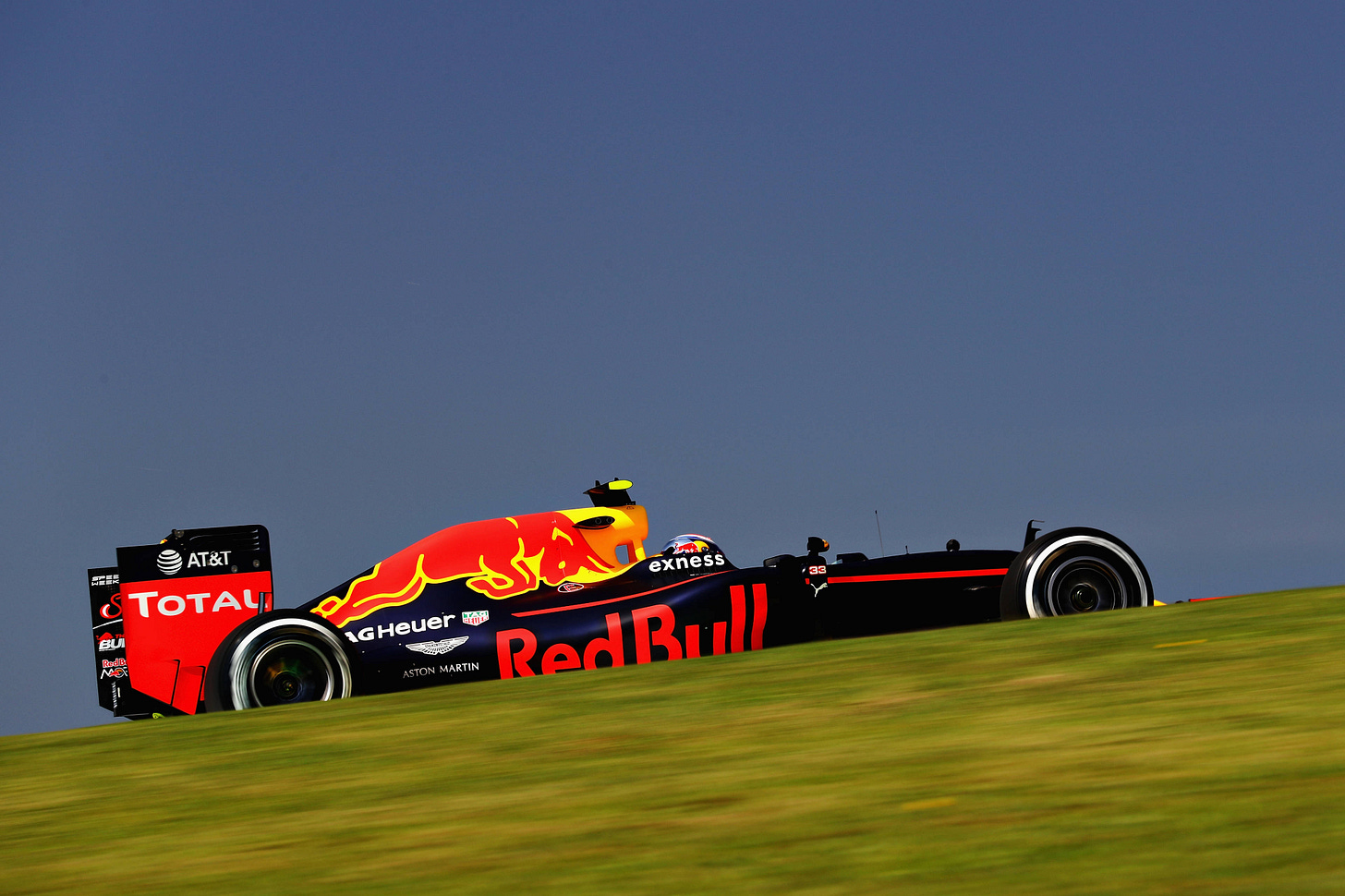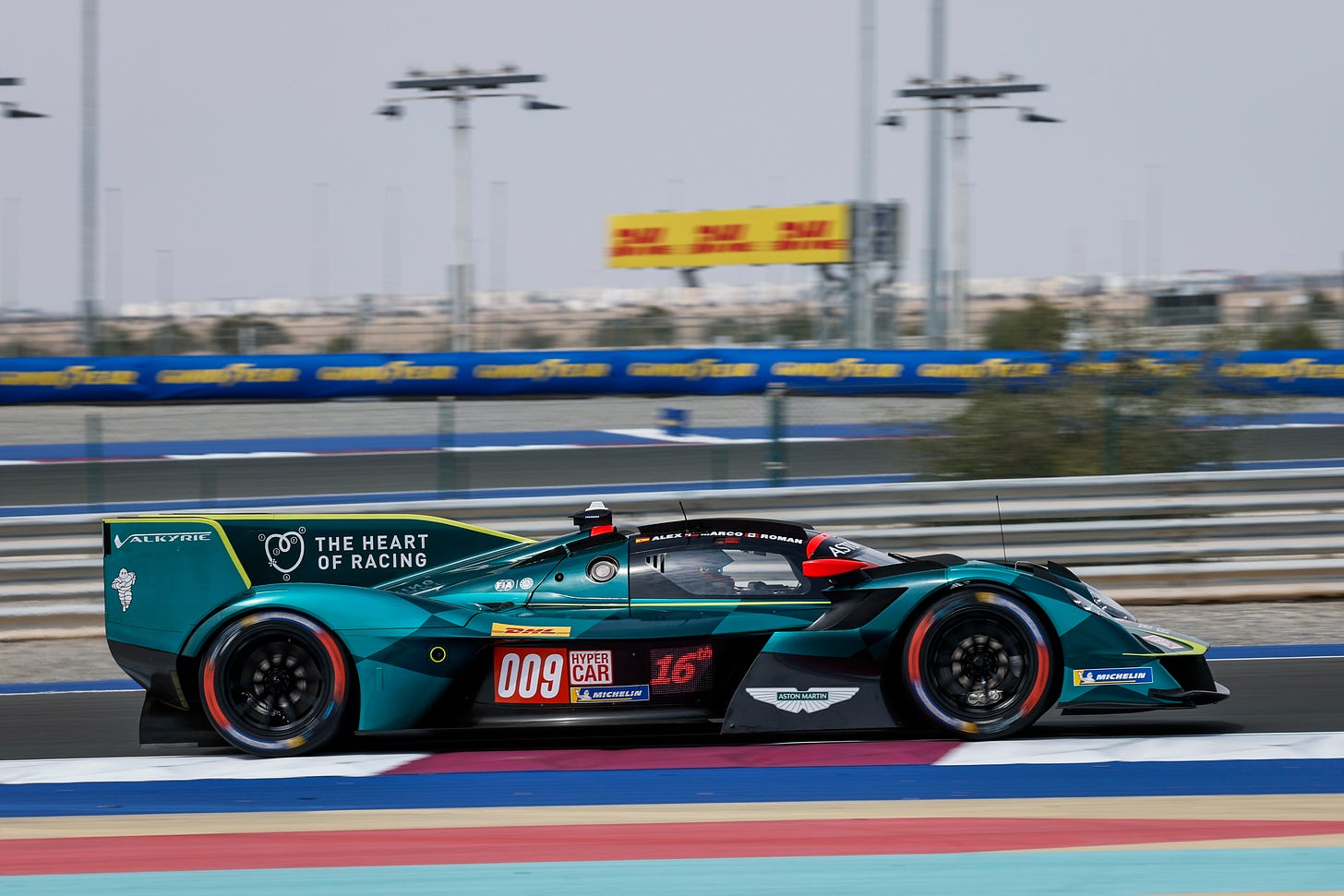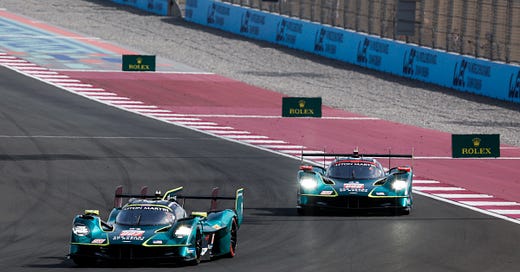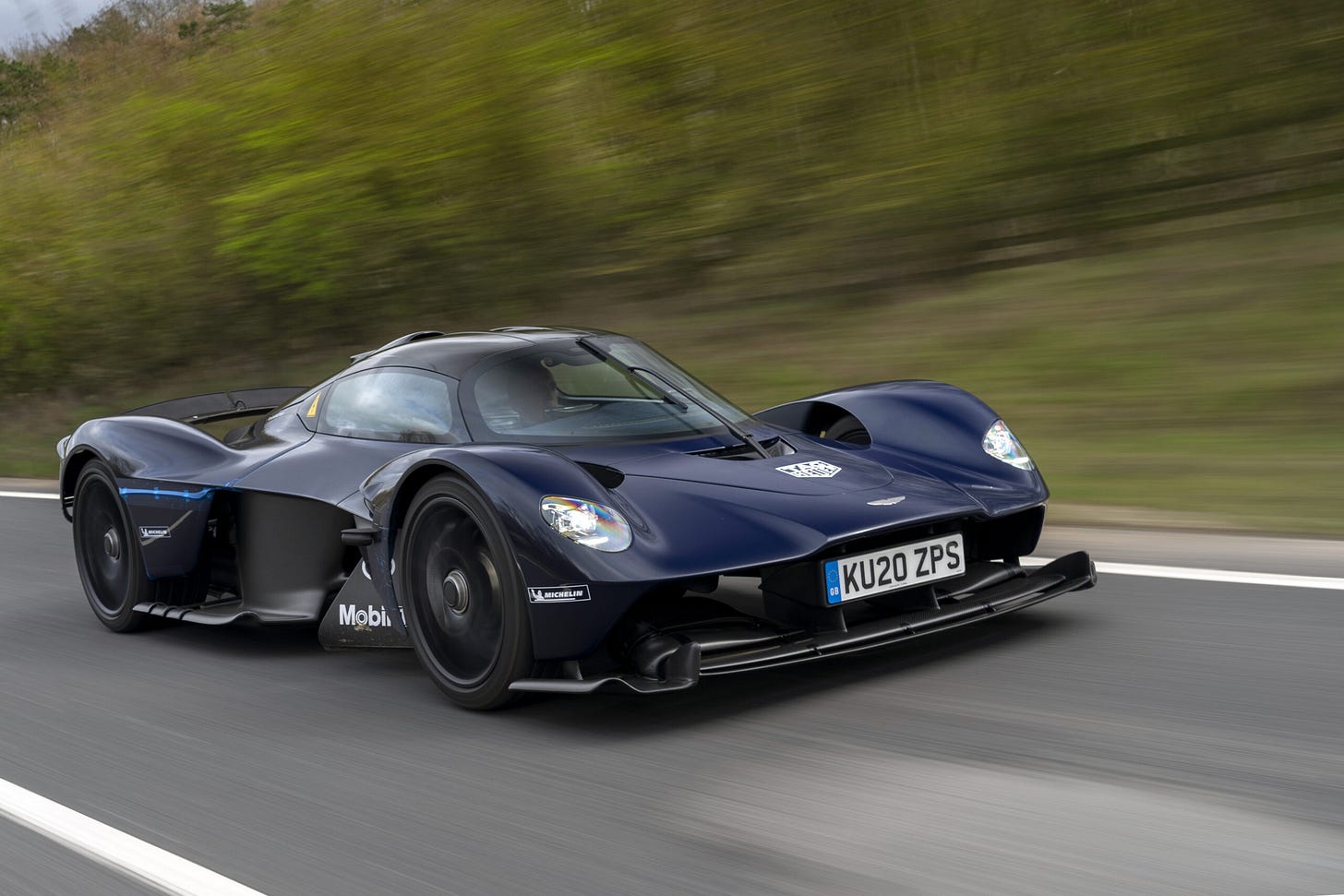Steady On
The Aston Martin Valkyrie's WEC debut in Qatar wasn't spectacular, and that's just fine.
One glance at the final standings from Lusail and it's easy to assume Aston Martin will take away few positives from its WEC Hypercar debut.
The two The Heart of Racing (THOR) Valkyries finished 17th and 18th—last in class—in the Qatar 1812 km at Lusail International Circuit. The 007 retired a little more than six hours into the 10-hour race with what Dailysportscar.com reported was a driveshaft issue. The No. 009 finished 23 laps behind the winning Ferrari 499P after losing significant time to address two problems—including a door that departed on track in the race's second hour.
The results meant Aston Martin joined Alpine as the only manufacturers to leave Qatar pointless.
But much like the longest endurance races, a new car's journey from grid debut to competitive on-track performance is a marathon, not a sprint. At Lusail, the Valkyrie took its most meaningful steps yet.
“We knew this was going to be a learning weekend for Valkyrie,” said Aston Martin’s Head of Endurance Adam Carter. “And we’ve encountered some of the teething issues you would associate with a new racing program. That said, we have been encouraged by the race pace both cars showed during their stints. We saw plenty of indications throughout our time during the Qatar Prologue and the opening race that give us cause to believe we can be competitive as the season matures."
From Road To Track
Aston Martin's return to sports car racing's top tiers adds to an already blossoming era in both WEC and IMSA. While the British manufacturer supplied engines in a partnership with Lola starting in 2009, Aston Martin has not developed a top-class endurance racing machine since 1989.
And the Valkyrie, which will compete in IMSA starting with the 12 Hours of Sebring later this month, is unlike any of its WEC or IMSA competitors.
It is the only top-class car developed from a production variant--one built in a collaboration with Red Bull Racing.
The partnership saw legendary race car designer Adrian Newey--now part owner and technical director of Aston Martin's Formula 1 team--play a central role in the Valkyrie's development. The collaboration is why Max Verstappen's Red Bull Formula 1 debut--a win in the 2016 Spanish Grand Prix-- came in a car sporting an Aston Martin logo.
Red Bull included the latest version of the British company's iconic winged badge on its 2016 and 2017 Formula One cars to celebrate the Valkyrie. Production ended in late 2024 after 275 were built, including 50 AMR Pro track-only versions.

Developed to FIA WEC LeMans Hypercar (LMH) specifications by Aston Martin and THOR, the race-ready Valkyrie, dubbed the AMR-LMH, borrows as much as possible from its road-going family members as well as the AMR Pro.
The biggest common element is the 6.5-liter naturally aspirated V12 Cosworth engine. The AMR-LMH's version is less powerful; FIA's LMH rules limit cars to a maximum output of 671 usable (brake) horsepower, compared to about 1,000bhp for the production versions. The dialed down engine runs leaner and slower, which improves fuel consumption and durability--two factors that are mostly non-factors for production hypercars but are endurance racing non-negotiables.
The modified engine’s size and performance led Aston Martin to leave out the production car’s hybrid motor, making the AMR-LMH unique among its competitors as a non-hybrid.
The AMR-LMH also received new front and rear bodywork with both quick-change ability and some aerodynamic modifications, and the drivers' cockpit has been optimized for safety.
Underneath the racing-specific changes, however, are the unmistakable lines of the street-legal Valkyrie.
'Two Or Three Years Behind'
While the Valkyrie AMR-LMH's road roots make for a great story, they won't help Aston Martin and THOR on track. Most of their WEC and IMSA competitors have at least two years of race experience under the current rules. Catching up to the pack will take time--and is hardly guaranteed.
"We know we’re starting two or three years behind our competition so the learning curve is going to be steep," said Harry Tincknell, co-driver of the No. 007 THOR Valkyrie.
One aspect of Aston Martin's program should help flatten its learning curve. Unlike the majority of its competitors, the manufacturer will be getting data from every WEC and IMSA outing.
In addition to its two-car WEC effort, THOR will run a single AMR-LMH in the remainder of IMSA's season. The car was supposed to debut at January's season-opening Rolex 24 Hours of Daytona, but Aston Martin changed its plans late last year, setting up March 18's 12 Hours of Sebring as the car's North American race debut.

The combined schedules give Aston Martin 17 weekends of competitive racing to learn and improve the Valkyrie AMR-LMH. Including Lusail, seven of them come before the biggest race on either schedule--the 24 Hours of Le Mans in mid-June. It's a race the manufacturer knows as well as anyone, having claimed 19 class wins since its debut at la Sarthe in 1928. But only one was an overall victory--1959's triumph by Roy Salvadori and Carrol Shelby.
Challenging for an overall win at Le Mans this year is almost surely beyond Aston Martin's reach. But adding to the 1959 triumph is part of the grand plan.
"It’s Year One and we have to be realistic about what we can achieve so our goal initially is just to go out there and get better every time," said THOR Team Principal Ian James. “But if I didn’t think we could reach the summit of the mountain, we wouldn’t be doing it."
References
Driveshaft issue: https://sportscar365.com/lemans/wec/qatar-post-race-notebook-2/
Aston Martin/Red Bull collaboration: https://www.redbulladvancedtechnologies.com/projects/amrb001/






